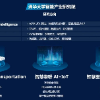Unmanned Aerial Vehicles (UAVs), commonly known as drones, have experienced expanding use in urban environments in recent years. However, the growing density of drones raises significant challenges, such as avoiding collisions and managing air traffic efficiently, especially in congested areas. To address these issues, a structured road system and an effective guidance algorithm are essential. In this paper, we introduce a markup language allowing to describe drone road systems (DRS), in which a road system is given by a set of individual roads, each of which can have a varying number of lanes. Roads can be linked through connecting lanes. Furthermore, we propose a novel short-term decentralized greedy (STDG) guidance algorithm that uses only the position and speed information of nearby drones -- communicated via periodically transmitted beacons -- to make real-time decisions such as stopping, changing lanes, or adjusting speed for the next few seconds. Unlike existing methods that rely on centralized coordination, our algorithm enables drones to operate independently while ensuring safety and efficiency. We present simulation results showing the impact of key wireless and algorithm parameters on performance metrics like the drone collision rate, average speed and throughput of the drone road system.
翻译:暂无翻译




